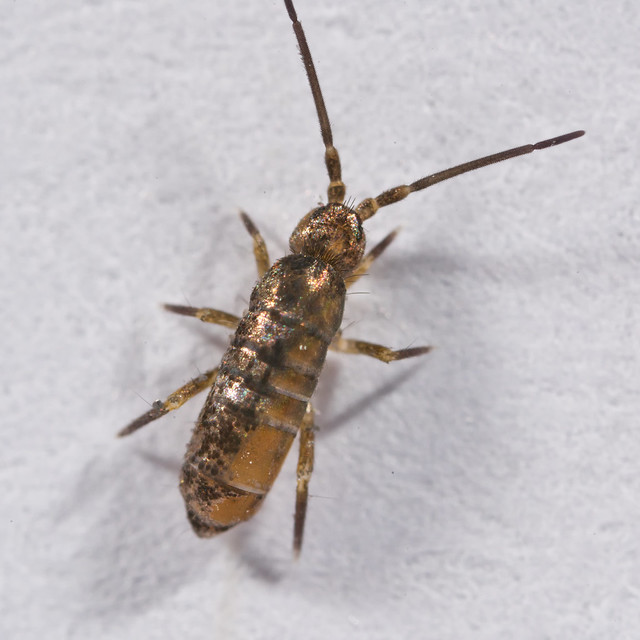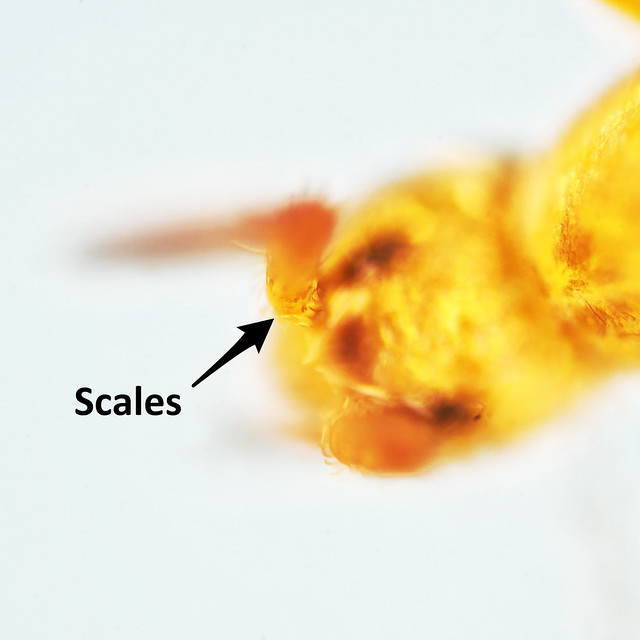
Tomocerus species are heavily scaled and this gives them their characteristic dark colour. But the scales are easily lost - the left side of the abdomen of this specimen shows the dark scales, but on the right side it looks like a golden coloured animal. Scales in specific locations are a diagnostic feature for many species, e.g. Lepidocyrtus lignorum has scales on the basal segments of the antennae:

I use a small paintbrush to manipulate springtails - I find the easiest way to pick them up is with a moist brush. This often dislodges scales, but using a pooter to move springtails is also quite rough. Scales are also commonly lost from specimens preserved in 70% isopropanol. So the answer to the missing scales problem is:
- If scales are an important identification feature and you can see them, you're a winner.
- But if you can't see any scales, it doesn't mean they weren't there originally - keep this in mind.
No comments:
Post a Comment
Comments welcome, I will respond as soon as I can.
Note: only a member of this blog may post a comment.